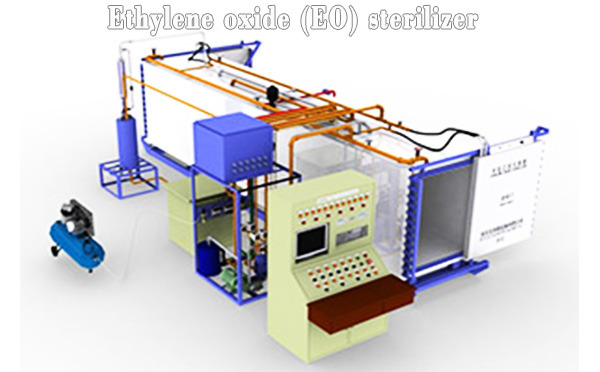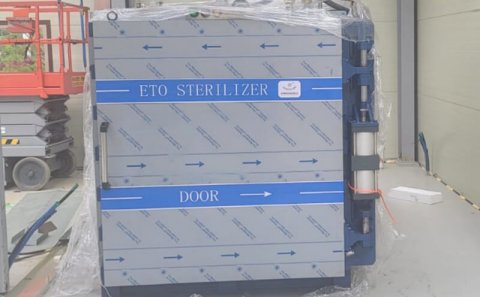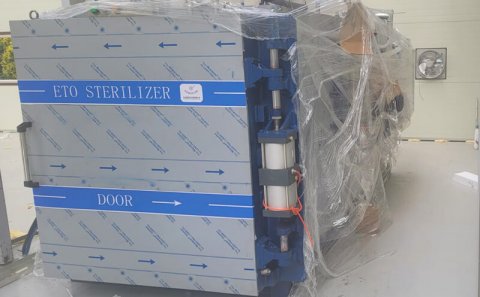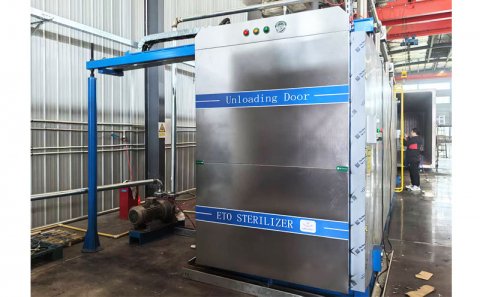
Application scope of ethylene oxide sterilization
Ethylene oxide does not damage the sterilized articles and has strong penetration, so most articles that are not suitable for general sterilization can be sterilized and sterilized with ethylene oxide. For example, electronic instruments, optical instruments, medical devices, fur, cotton, chemical fiber, plastic products, endoscopes, dialyzers and disposable medical supplies. Ethylene oxide is one of the most important low temperature sterilization methods.
General provisions
Ethylene oxide is a kind of inflammable, explosive and moderately toxic dangerous chemicals. The concentration in the air is more than 3%, which may cause explosion when encountering open fire. Ethylene oxide sterilizer is also a mechanical and electrical integration, with a high degree of automation, withstand certain pressure equipment. Therefore, the use and operation of ethylene oxide sterilizer must strictly comply with this safety regulation.
Advantages about sterilization
-
1. It can kill all microorganisms, including spores, tuberculosis, bacteria, es, fungi, etc.
-
2. The sterilized articles can be wrapped and packaged as a whole, and can remain sterile before use.
-
3. In contrast, ethylene oxide does not corrode plastics, metals, and rubbers to prevent yellowing and embrittlement.
-
4. It can penetrate irregular, complex and impermeable articles (such as long and thin catheter) for sterilization.
-
5. It can be used for sterilization of articles that cannot be soaked in disinfectant, sterilized by dry heat, pressure, steam and other chemical gases.
Notice of aterilization
Ethylene oxide is inflammable and explosive. Fire and explosion proof measures shall be taken at the operation site, and there shall be no open fire operation and electric spark.
Preparation and packaging of articles before sterilization:
The articles to be sterilized must be thoroughly cleaned, and it should not be washed with normal saline. There should be no water drop or too much water on the sterilized articles to avoid dilution and hydrolysis of ethylene oxide. Ethylene oxide can be used for sterilization of almost all medical products, but it is not suitable for sterilization of food, liquid, oil, talcum powder and animal feed. The packaging materials suitable for ethylene oxide sterilization include paper, composite dialysis paper, cloth, non-woven fabric, ventilating rigid container, polyethylene, etc.; the packaging materials not suitable for ethylene oxide sterilization include metal foil, PVC, cellophane, nylon, polyester, polyvinylidene chloride, and impermeable polypropylene. The change of packaging materials shall be verified to ensure the reliability of sterilization of sterilized articles.
Mar 05, 2020
view: 1353
Installation of sterilizer 1 venue The ethylene oxide sterilizer shall be placed in an independent workshop, far away from the crowd, and there shall be no open fire operation within 30-50m of the site, and other situations that produce ope...
Read More
Oct 29, 2020
view: 1961
The specifications for the sterilizer and the sterilization process; a) IQ / OQ data; b) Physical and microbiological records of the entire PQ run; c) All pressure gauges and recorders have been calibrated and within the validity period. d) Regulatio...
Read More










